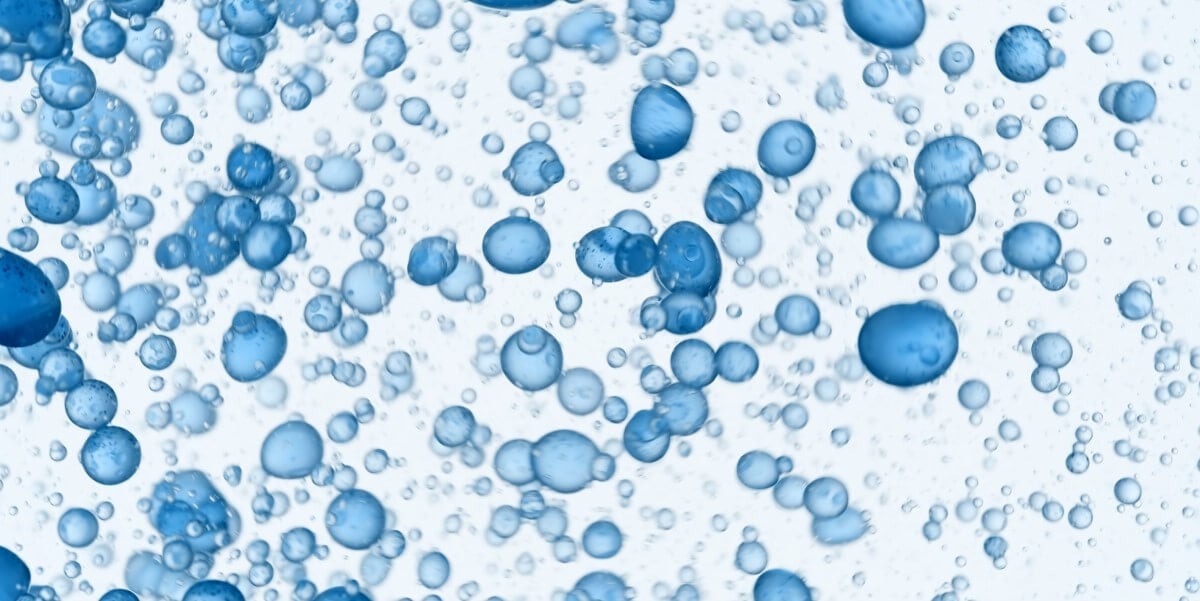What is a water flushing regime and why do you need one?
Duty holders are responsible for preventing and controlling the risk of exposure to Legionella bacteria, which can lead to the potentially fatal Legionnaires' disease.
Water flushing regimes are of paramount importance in protecting buildings against the threat of Legionella bacteria. Legionella thrives in warm water environments, particularly in stagnant water that is not regularly flushed or circulated.
Buildings with complex water systems, such as office buildings, hospitals, and large residential buildings, are particularly susceptible to Legionella growth if proper flushing methods are not implemented.
In this blog post, we look closely at why a flushing regime should be considered in every organisation's water safety plan - and what it entails.
What is water flushing?
Water flushing is a method undertaken to prevent the build-up of conditions favourable to the growth of Legionella and other bacteria within hot and cold water systems. It does this by:
- Introducing fresh cold water containing residual disinfectant
- Exposing pipework to temperatures at which Legionella bacteria is discouraged
- Dislodging biofilm through the simple act of running water
A water flushing regime should be designed so that it allows for the whole dead-leg (section of stagnant water) to be removed.
The water should be purged long enough for circulating or freshwater to be drawn from the outlet - indicating that all stagnant water has been expelled.
How does it compare to other methods of preventing Legionella bacteria?
The best way to prevent Legionella bacteria from growing is to ensure systems are always up to temperature and that the water is running regularly through all outlets. But in some cases, that is not possible.
For instance, the fast-changing lockdowns and tiering systems during the Covid-19 pandemic provided a particular challenge in ensuring that building water temperatures were kept correct and water did not stagnate.
A common defence against Legionella is to control the temperature of the water. Hot water temperatures must be above 50°C within 1 minute of opening an outlet, and cold water temperatures must be below 20°C after 2 minutes of opening the outlet.
There are variations for Healthcare environments and for mixed or blended outlets where the water coming into these devices should adhere to these temperatures.
Systems may have challenges in maintaining temperatures for a variety of reasons. Engineering out the problem may not be practical or as a reaction to events such as lockdowns, in which case it may be necessary to implement a flushing regime. Stagnant water is a breeding ground for Legionella bacteria. Flushing the hot or cold water system will help ensure that the water is kept flowing up to temperature and doesn't stagnate.
How often should water flushing be carried out?
In most cases, water flushing should be carried out at least weekly to reduce the risk of Legionella and other bacterial growth.
But in high-risk populations such as healthcare facilities and care homes, a risk assessment may indicate the need for more frequent flushing - i.e. twice weekly.
Water flushing may also be increased when the water system is not used for seven days or more, i.e. during the temporary closure of buildings or departments. The length of purge and the way the flushing is done may also need to be extended, for example, turning taps and showers on for two minutes, preferably at a high temperature and from multiple locations simultaneously to mimic normal usage.
Several factors indicate a water flushing regime is especially critical:
- Age and condition of the system - Older systems may accumulate sediment and debris over time, obstructing water flow, hindering system performance, and increasing the risk of clogs and damage. Regular flushing is, therefore extremely important for older systems and can help extend the system's lifespan.
- Water quality issues - Problems such as high levels of dissolved minerals, chemicals, or contaminants can adversely impact the performance and efficiency of water-dependent systems. These issues can lead to corrosion, scaling, fouling, and reduced heat transfer efficiency, among other problems. Evidence of any of these issues, e.g. if the water has a foul odour or is discoloured, can indicate the need for flushing to remove contaminants and restore water quality.
- System inefficiencies - An inefficient system can exhibit various signs that flushing is required. Reduced flow rates, decreased water pressure, inconsistent water temperature, or recurrent clogs indicate sediment accumulation, mineral deposits, or other obstructions within the system. Flushing can alleviate these issues and restore optimal system performance.
Recognising these indicators and addressing them through a water flushing regime helps ensure the smooth operation, longevity, and efficiency of water-dependent systems.
Regular flushing not only mitigates the effects of ageing and maintains water quality but also prevents system inefficiencies, reducing the need for costly repairs or replacements.
Why is water flushing necessary for Legionella prevention?
Legionella bacteria can lead to Legionnaires' disease, which can cause symptoms such as a high temperature, dry cough, muscle aches and headaches. And in some cases, it can be fatal.
Companies have been fined millions of pounds when Legionnaires' disease has resulted in a fatality. In 2018, a care home provider was fined £3 million after an elderly man died at one of its nursing homes. The failure to flush and disinfect pipes following refurbishment works was declared as the most likely cause of the infection.
The importance of flushing was a popular topic of discussion during the coronavirus pandemic. Reduced building occupancy due to lockdown restrictions highlighted the need for increased flushing to protect the water quality.
Research by WCS Group revealed how the lockdown negatively impacted water quality - a 20% increase in positive Legionella sample results were returned on a like-for-like basis from independent, UKAS Accredited laboratory testing.
How does water flushing work?
Water flushing helps prevent the growth and spread of Legionella bacteria in several ways:
- Disrupting the biofilm - Legionella bacteria often colonise and grow within biofilms, which are thin layers of microorganisms that develop on the surfaces of pipes, tanks, and other water system components. Flushing helps disrupt and remove these biofilms, reducing the presence of Legionella bacteria.
- Maintaining water temperature - Legionella bacteria thrive in warm water environments, typically between 20°C and 45°C. Flushing water at temperatures outside of this range can help prevent bacterial growth by either cooling or heating the water to levels inhospitable for Legionella.
- Preventing stagnation - Stagnant water provides an ideal breeding ground for Legionella bacteria. Flushing water through the entire system ensures continuous circulation, minimising the risk of water stagnation and reducing the opportunity for bacterial growth.
- Removing sediment and deposits - Sediment and deposits in water systems can serve as a nutrient source for Legionella bacteria. Flushing helps remove these potential food sources, limiting the conditions that support bacterial growth.
Water flushing best practices
Turning on a tap might sound easy, but it is essential to follow best practices when flushing:
- Water released from the outlet during flushing should be purged to drain safely
- Flushing should be carried out in a safe manner which minimises aerosol production
- Hard-copy or electric records should be recorded, including a list of the individual outlets flushed, the date, time and duration of flushing, biocide concentration, any other observations, and the initials of the person carrying out the work
- Training is likely to be required for personnel carrying out flushing activities, as well as those supervising them
Having a system to help you identify outlets that are used infrequently is also very important. This may mean involving others within your organisation to find out how often outlets are used, as well as designers and installers.
Summary
A water flushing regime is critical to maintaining good water hygiene and preventing the risk of Legionella bacteria growth. By implementing regular flushing practices, you can disrupt biofilms, maintain proper water temperatures, prevent stagnation, and remove sediment and deposits that provide a breeding ground for bacteria.
By following best practices and keeping accurate records, you can ensure a comprehensive flushing approach that promotes water quality, mitigates risks and ensures the wellbeing of building occupants.
However, a water flushing regime should form part of a wider approach to Legionella prevention and water treatment in general.
This post was originally published in December 2020, and updated in May 2023 for accuracy.
Topics: Water Treatment & Hygiene

Written by Jon Greaves
Jon has progressively worked through operational roles, account management, technical management, and senior management roles over the last 16 years within one of the group companies before moving into the role of Water and Air Managing Director. Jon has experience across multiple sectors of water and air compliance, including district energy networks; data centres; healthcare; food and beverage and facilities management. Jon acted as a corresponding steering committee member on CIBSE CP1 – Heat Networks Code of Practice for the UK released in 2020.




